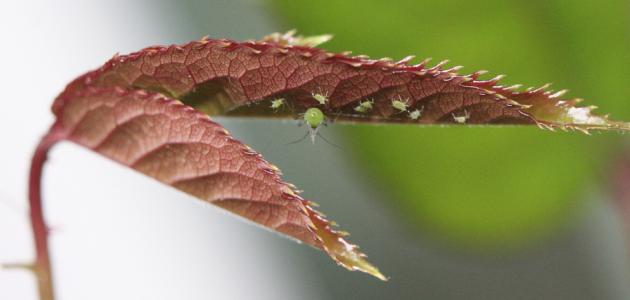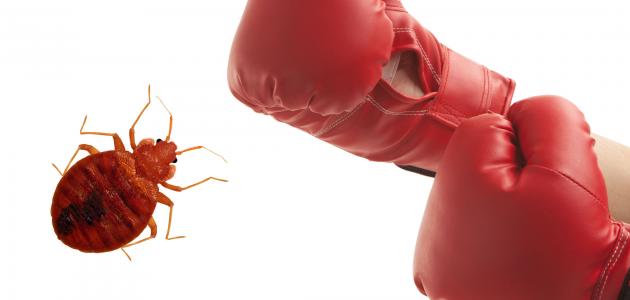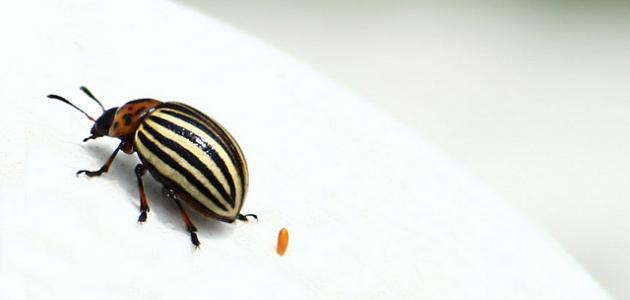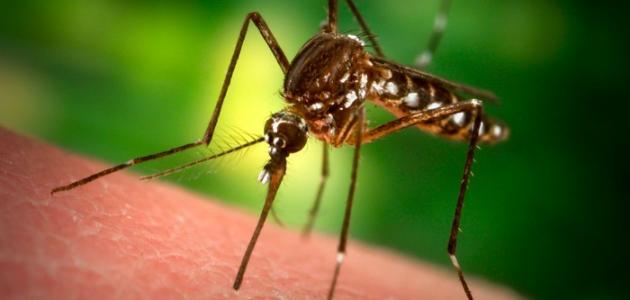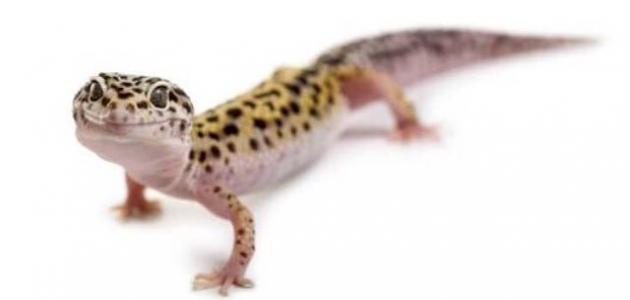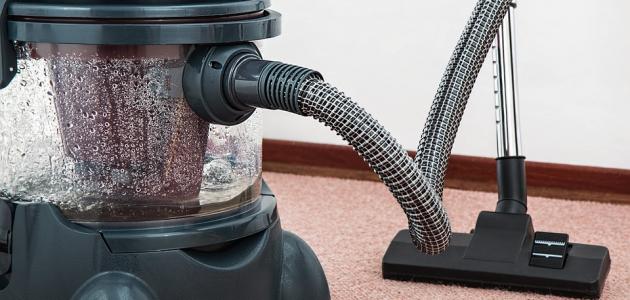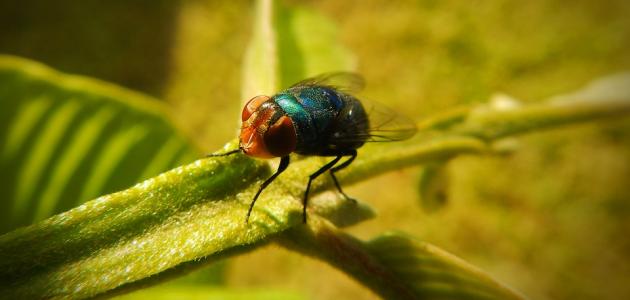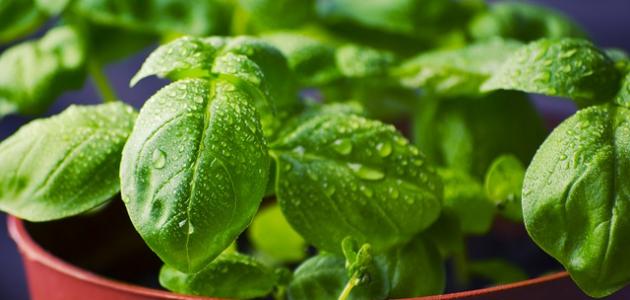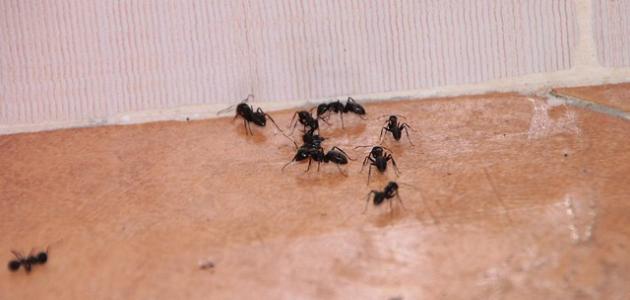Methods of controlling aphids
Aphids gather to obtain food in large groups on the leaves and stems of plants, yet they can be found as single insects, and they can cause serious pests to plants that impede their growth. viral diseases, and are characterized by the fact that they do not move quickly when disturbed; Therefore, they can be distinguished from insects that may be confused with them, such as: leafhopper insects.
Aphids usually attack the juicy parts of the plant, the underside of the leaves, and feed on plants using piercing sucking mouth parts, and during that they inject some types of toxins that can distort plant tissues, and produce sticky secretions called honeydew (in English: honeydew) on the surface of the plant that resemble It has the consistency of a sugary drink, and aphids can be controlled in several ways, including:
Agricultural control
It is possible to get rid of aphids through agricultural control or cultural control in the field of agriculture (in English: Cultural Control) by making some modifications to the environment in which the plant grows, for example:
- Check the land before you start planting, and get rid of weeds that can accumulate aphids; To avoid transmission to agricultural crops after their growth.
- Pruning the branches of large trees that provide dense canopy encourages the growth of aphids; The area becomes less suitable for him.
- Pruning leaves and new shoots infested by aphids immediately after the infestation has occurred before the insects move to other parts.
- Use an appropriate amount of nitrogen fertilizer; Because the high concentration of these fertilizers encourages the growth of aphids, and it is recommended to use the less soluble forms and use them in small batches throughout the season instead of applying a large amount at once. compost in this case.
- Growing seedlings under protective covers inside the garden, or inside greenhouses; Because they are subject to severe damage if infected with aphids in the early stages, and after the seedlings become more tolerant, they can be moved abroad. On the other hand, protective covers help prevent the spread of viruses transmitted by aphids.
- Covering the soil with an organic cover (in English: Mulch) when growing aphid-sensitive vegetables such as summer squash and melons; Because it repels aphids and other insects on the one hand, and because it reflects the sun's rays on the leaves on the other hand, which enhances the growth of the crop, in addition to its role in controlling and eliminating weeds. Covers can be purchased in the form of silver-colored plastic rolls, or made using spray-coated construction paper. , or transparent plastic, and when using a plastic cover, the drip irrigation method must be used, and in all cases the reflective cover must be removed when the temperature rises to prevent the plant from overheating.
- Washing aphid-affected plants by directing a strong spray of water on them to wash the honeydew, which causes the aphid to fall, and you will not be able to climb the plant again.
mechanical control
Chemical control can be used to get rid of aphids, and this method is represented by directing a strong spray of water on the affected plants, which leads to the fall of the aphids from them, and in this case the aphids lose their source of food and die of starvation, especially since they will not be able to climb the plant again, and it is recommended to use water sprinklers and hoses the early regular routine to allow the plant to dry in the sun, reduce the chances of infection with fungal diseases, and avoid the use of high-pressure washing machines; Because it may damage the plant, and it is possible to get rid of aphids in the early stages of infection - when their numbers are few - by rubbing it off the plants with the fingers, or using a damp cloth.
Read also:Reasons for the appearance of termites in the housebiological control
Biological control means getting rid of aphids by using the natural enemies (in English: Natural Enemies) of the aphid insect, and the natural enemy can be a predator, an intruder, or something else, as there are usually insects on plants that devour aphids naturally, but the use of insecticides and weather changes They lead to her death or disrupt her role in eliminating it. There are two types of these insects; Either predatory or intrusive, as the predatory insect destroys several types of aphids directly, and needs to devour a large number of it in order to grow and develop, while the parasitic insect lays its eggs inside the aphid and does not kill it directly, but the insect grows and develops inside it, which will eventually lead to its killing, and most of these Insects are specialized for a particular type of aphid.
Given the importance of the role of natural enemies in eliminating aphids, it is necessary to examine the affected leaves and look for eggs, larvae, or pupae of aphid predators, such as: ladybugs (spotted beetle), net-winged insects, and flower flies before thinking about resorting to insecticides. Also from the presence of intrusive insects such as the parasitic wasp, and the parasitic wasp can be distinguished by its round shape and brown color.
Wasps that parasitize on aphids are slender and small in size, about 2.5 mm long, and may be black or brown in color. The female wasp lays eggs inside the aphids, and when the eggs hatch, a small white larva emerges from it. The larva begins to develop inside the body of the aphids and turns into Cocoon, and acquires a leaf-like appearance, and its color becomes brown or blackish, then it turns into an adult insect, and the result is the swelling and death of the aphid, after which the wasp begins chewing the back of the aphid's body to form a hole so that it can get out, and it is worth mentioning that some Parasites cocoon under the aphid, not inside it.
Read also:A way to get rid of small cockroachesAnother type of natural enemy of aphids can be mentioned; They are disease-causing fungi, as they are available in the market in several commercial forms. Including the disease-causing fungus known as (Bauveria Bassiana), which can be used when the numbers of aphids are few, and it works best when the relative humidity is more than 90%, and it must be reused frequently; Due to the rapid reproduction of aphids, the disease-causing fungus known as (Isaria Fumosoroseus) can also be used when the relative humidity is more than 80% for a period ranging between 8-10 hours. In order to obtain better results, the aphid must be covered with fungal spores completely and reused between 3 -5 times, and it is worth noting that combining the types of natural enemies of aphids - that is, predatory, intrusive, and disease-causing insects - will give better results than using each type separately.
Chemical control
Insecticides (chemical pesticides) can be used when the previous methods fail to eliminate aphids, and among the most important insecticides used in this field are:
- Inert oils: Inactive oils, such as horticultural oils, are used to eliminate aphids that spend the winter in the egg stage. These oils are used in the form of a spray that can be sprayed on the eggs before the buds open. Among the types of aphids that horticultural oils can be used to eliminate them are: aphids that live on willow trees, poplars , pine, rose, linden, maple, oak, hawthorn, and rabatia. As for the aphid that lives on the myrtle trees, it cannot be eliminated by using these oils.
- Non-permanent insecticide sprays: This type of pesticide is called by this name because the effect of some of them lasts for several minutes, and the effect of others lasts for several hours only, and examples of them are anti-insect soap and pyrethines, and one of the disadvantages of this type is that it must touch the aphid in order to kill it, so it does not affect the aphid that is present within the curled leaves; Because it does not reach them, and the advantage of this type is that it is selective in its effect, as it does not affect much on beneficial insects such as plant pollinators, and the natural enemies of pests, and it is of little toxicity for birds and mammals.
- Permanent insecticide sprays: The effect of some of these pesticides on the aphids lasts for several hours, while the effect of others lasts for several days, and they do not affect the aphids present in the wrapped leaves. Long-term control of natural enemies, examples of which are:
- Pyrethoids: Synthetic derivatives that can be produced from natural pyrethrins that are extracted from the flowers of some plants such as chrysanthemums. Examples include bifenthrin, cypermethrin, cylothrin, cyfluthrin, and permethrin.
- Malathion: This insecticide kills aphids on contact.
- Systemic insecticide sprays: These pesticides are transmitted within the plant, so they are more capable of killing aphids, and they have an effect on aphids that are inside the wrapped leaves, as systemic insecticide sprays contain acetamiprid and imidacloprid, and their effect lasts from two days to a few weeks, and among its disadvantages is that it It also kills the natural enemies of aphids, and poses a threat to insects that pollinate the plant if sprayed on flowering plants.
- Systemic insecticides applied to soil: These systemic pesticides can be applied to the soil, absorbed by the roots and transmitted within the plant, so that they are concentrated in the young leaves. These pesticides are sold under different trade names, some of which contain imidacloprid, while others contain a mixture of imidacloprid, and another pesticide, clothianidin. Pesticides after mixing them with water at the base of the plant after removing the cover, if any, and soil moisture must be maintained to allow the pesticide to move to the roots, and pesticides take in ideal conditions in terms of heat and humidity a few weeks to be able to kill aphids, and their effect can last for a few months, so they form A danger to beneficial insects, and it is not recommended to apply it to flowering plants or those that will bloom in the near future.
Damage from aphid infestation
Aphids feed by sucking plant sap from unopened flower buds, from the underside of young leaves, and from growing stems, twigs, bark, and roots. In many cases, aphid feeding does not leave an effect on the plant, yet it sometimes causes curling and twisting of the leaves, their yellowing, and weakens the growth of the plant, as well as stunting or death of the buds.
Read also:Getting rid of bed bugsAphids, after sucking plant sap, produce a sticky and shiny by-product called the honeydew, which is a sugar-rich substance that covers the bark and leaves, attracting ants, yellow jackets, and other insects that feed on them. Also, the honeydew may cause plant leaves to stick together and encourage the growth of fungi. Sooty or sooty mold - although it is harmless to the tree - which causes the appearance of dark spots on the leaves and branches, and the honeydew often does not cause harm to the plant, but it may fall from the trees on the things underneath such as cars and make them sticky.
Aphids carry several types of viruses that can be transmitted to plants. Such as the cucumber mosaic virus, which infects some types of vegetables, such as: tomatoes, lettuce, red beets, squash, cucumbers, pumpkin, melons, beans, and others, and also infects annual and perennial plants such as balsam and others, causing leaf mottling, yellowing and wrinkling, and may cause deformation. fruits, as it can hinder plant growth.
Common species of aphids
Aphids infesting vegetables
The following table shows some types of aphids that feed on vegetables.
| common name | The scientific name | host plant |
|---|---|---|
| aphid bean (black bean thinner) | Aphis Fabae | Legumes, woody ornamental plants, and flowers. |
| Who is the cabbage? | Brevicoryne Brassicae | Cabbage and mustard crops. |
| Green peach aphid (the thinnest of the shallowest peaches) | Myzus persicae | Corn, tomatoes, squash, peppers, lettuce, legumes, spinach, carrots, flowers, flowering peaches, and stone fruits. |
| From the melon, or from the cotton | Aphis Gossypii | Carrots, cucurbits, citrus fruits, many flowers, and many natural woody ornamental plants. |
| Who is potato? | Macrosiphum euphorbiae | Potatoes, lettuce, tomatoes, spinach, and others. |
Aphids infecting fruit trees
The following table shows some types of aphids that affect fruit trees.
| common name | The scientific name | host plant |
|---|---|---|
| Green apple aphid (apple aphid) | Aphis pomi | Apple, pear, hawthorn, cotton or quince plants. |
| Who curls peach leaves | Brachycaudus helichrysi | Peaches, dried plums. |
| Dusty peach aphids or mealy peach aphids | Hyalopterus pruni | Peaches, dried plums. |
| Pink apple | Dysaphis plantaginea | The apple. |
| of the mystic apple | Eriosoma lanigerum | Apples, pears, hawthorns, and fire thorns. |
Aphids infesting ornamental woody plants
The following table shows some types of aphids that live on ornamental woody plants, knowing that the bean aphid, the green peach aphid, and the melon aphid can infect woody ornamental plants as well.
| common name | The scientific name | host plant |
|---|---|---|
| Who curls the leaves of the muran | Prociphilus species | The exercise. |
| of crepe myrtle | Sarucallis Kahawaluokalani | crepe myrtle |
| of the lights | Cinara species | Conifers such as spruce, fir, cedar, and pine. |
| Who is the Sufi masquerade? | Shivaphis Celt | western lox plant. |
| Oleander thinner | Aphis nerii | Oleander, and milkweed. |
| Who is the rose? | Macrosiphum Rosae | roses. |
| aphids | Illinois Liriodendri | tulips |
Aphid
Aphids are a small, pear-shaped insect whose size does not exceed the size of a pinhead. It may appear green, yellow, brown, red, or black depending on the species to which it belongs and the type of plant it feeds on. ball of wool Because of the presence of white or gray waxy secretions on the surface of the body, the aphid insect also has long legs and antennae, and it can be distinguished from other insects by the presence of a pair of tube-like projections on the abdomen called the horny canals, and they are usually without wings, but most of their species are able to produce Individuals with wings to be able to move from plants crowded with aphids or plants that have decreased in quality to other plants, and although they do not improve flight, they can travel several miles with the wind due to their small size.
The aphid insect (in English: Aphid) belongs to the kingdom of animals, the phylum of arthropods, the class of insects, the order of Hemiptera, the family of aphids, and it includes 45 different genera, and it is classified into 71 species.
